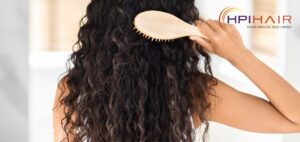Regain confidence with Rogaine Foam. Say goodbye to hair loss.
Hair loss can be a distressing experience for women, impacting self-esteem and confidence. Many women turn to solutions like Rogaine foam to combat this issue. However, the initial stages of using Rogaine foam can come with unique challenges and changes to be aware of.
Rogaine foam is a popular over-the-counter treatment for hair loss, known for its active ingredient minoxidil. When first starting to use Rogaine foam, many women may notice some side effects and shifts in hair growth patterns. Understanding what to expect during the initial stages of using Rogaine foam can help prepare and manage expectations for women seeking to address their hair loss.
Hair Loss
Hair loss, or alopecia, can be triggered by various factors, including genetics, hormonal changes, stress, and certain medical conditions. For women, experiencing hair loss can be emotionally taxing and have a significant impact on their overall well-being. It’s important to recognize the severity of this issue and seek effective solutions to address the root cause of the problem.
Alopecia can affect anyone, regardless of age or background. However, it’s essential to note that women experiencing hair loss may have different needs and concerns compared to men. Understanding the specific challenges women face when dealing with hair loss is crucial in tailoring treatments and support to meet their unique requirements.
Initial Effects of Rogaine Foam for Women
When women begin using Rogaine foam to combat hair loss, they may experience an adjustment period as their bodies adapt to the new treatment. It’s common for women to notice changes in their hair and scalp during the initial stages of using Rogaine foam. Some effects to be mindful of include:
– Increased Hair Shedding: In the beginning, some women may notice an increase in hair shedding after starting Rogaine foam. This is a common occurrence and should be viewed as a sign that the treatment is stimulating the hair follicles.
– Scalp Sensitivity: It’s not uncommon for women to experience mild scalp irritation or sensitivity when first using Rogaine foam. This can include redness, itching, or a tingling sensation. These side effects typically diminish as the scalp becomes accustomed to the treatment.
– Changes in Hair Texture: As Rogaine foam works to promote hair growth, women may notice changes in the texture and appearance of their hair. Some individuals report that their hair feels thicker or coarser during the initial stages of treatment.
Managing Expectations and Patience
As with any hair loss treatment, patience is key when using Rogaine foam. It’s important for women to have realistic expectations and understand that visible results may take time to manifest. Consistency is critical when using Rogaine foam, and it’s essential to remain committed to the treatment regimen to achieve optimal outcomes.
Women beginning a hair regrowth journey with Rogaine foam should also seek advice from healthcare professionals or trichologists to gain insight into the best practices for application and managing potential side effects. Understanding the nuances of using Rogaine foam and how it interacts with individual hair types and conditions can support women in navigating the initial stages of treatment more effectively.
Schedule Appointment
The initial stages of using Rogaine foam for women may present some challenges, but with comprehensive knowledge and realistic expectations, it can be a valuable and effective tool in combatting hair loss. Seeking professional guidance and maintaining patience are vital components of the journey towards healthier, fuller hair.
With a tailored approach and knowing the changes that may occur during the adjustment period, women can empower themselves to take charge of their hair regrowth journey with Rogaine foam.









